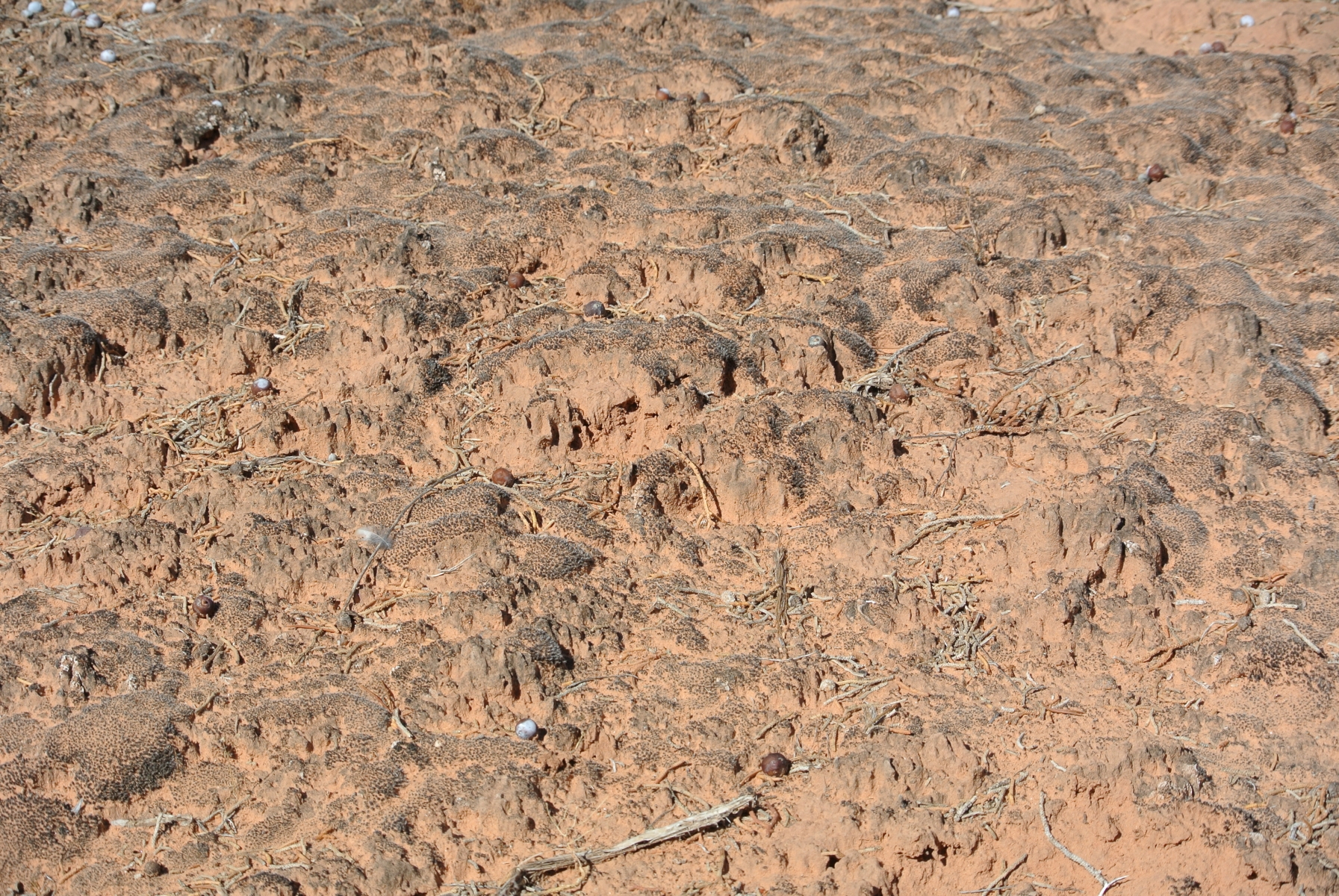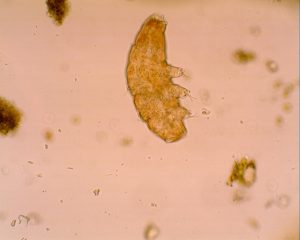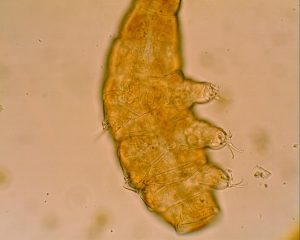Biocrust Community-Ecosystem Studies Overview
Do high levels of genetic, functional, and phylogenetic diversity improve the resilience of moss-dominated biocrusts to climate change?
The two main target species, S. ruralis and S. caninervis, are part of the highly functional and globally distributed biocrust communities of drylands (Bowker et al. 2005; Belnap et al. 2014), along with associated cyanobacteria, lichens, algae, and fungi. These relatively large dryland mosses often contribute significantly to critical biocrust services including erosion resistance, soil fertility, and hydrological engineering (Belnap 2002; Chaudhary et al. 2009; Bowker et al. 2013). Based on future projections of warming, and the possibility of increasing summer rain events at the expense of winter rain events in the arid Southwest, we will conduct three experiments in greenhouse and field settings. Our goal is to determine the influence of taxonomic, functional, and within-species genetic diversity on the resistance or resilience of Syntrichia-dominated biocrusts to climate change.
Hypotheses
We expect:
(1) that both taxonomic and functional diversity of the community and within-species genetic diversity of Syntrichia will favor faster vegetative growth, greater productivity, and greater soil aggregate stability in biocrusts,
(2) and that greater biodiversity will result in greater resistance or resilience to climate change, both at the community scale (e.g. maintaining productivity) and within Syntrichia (e.g., maintaining desiccation tolerance and sex expression rates).
To address these hypotheses in the experiments below, we will monitor:
(1) vegetative growth or die-back of all species as a measure of community resilience;
(2) Normalized Difference Vegetation Index (NDVI) using digital camera photosets with and without IR filters (Fischer et al. 2012) as a surrogate of community productivity;
(3) soil aggregate stability as an index of erosion resistance (Herrick et al. 2001);
(4) sex expression rate (Bowker et al. 2000);
(5) desiccation tolerance of Syntrichia populations using signature transcriptomic assays (see section D2).
Greenhouse experiment
This study will produce “custom biocrust communities” with differing levels of taxonomic and genetic diversity. We have already successfully grown multiple moss species, cyanobacteria, and some lichens in the greenhouse and have a system for doing so (Fig. 4). We will consider two bryophyte communities associated with Syntrichia caninervis and Syntrichia ruralisdominated biocrusts, using the collection of Syntrichia genotypes described in section D1 and sourced from two focal sites along an

elevation gradient in Southeast Utah in the Colorado Plateau ecoregion. Each collection contains 15 cushions, from which we will sample five stems placing them into axenic culture in order to produce 75 individual cultures of each species.
We will also resample the focal sites, returning with collections of five other community members. In the second year, biocrust communities will be grown in the greenhouse using an expansion of an automated system already in place at NAU (Fig. 4). The communities will be created according to a crossed design featuring all 24 possible combinations of: (1) the focal species (S. ruralis or S. caninervis; (2) additional genotypes of Syntrichia (random draws of 2, 5 and 10 individuals from the pool of 75), and (3) additional community members (Syntrichia + 0 – 3 additional randomly drawn community members from the pool of five), each replicated 10 times (total = 240 units). To create an experimental unit, source biocrust material will be cleaned and weighed to a standard amount and dispersed evenly over the surface of a basin of soil. Based on past experience growing Syntrichia (Bowker lab), Knop’s solution will be applied monthly to provide a nutrient supply sufficient for growth. We will monitor vegetative growth, NDVI, and sex expression within Syntrichia after 4-5 months of growth in the greenhouse under favorable establishment conditions; samples will also be taken for signature transcriptome analysis in the Oliver lab.
After the establishment phase, we will switch the regime to a highly stressful one by applying a series of short (<2 hours) hydration events midday during June, outside of the greenhouse. Syntrichia is highly sensitive to short hydration events because it cannot attain a positive carbon balance in too short of a physiological window (Barker et al. 2005), and some authors have suggested short hydration events will become more common in future climates (Barker et al. 2005; Reed et al. 2012). Although Flagstaff, Arizona is a cooler climate than the source climates, June daytime soil surface temperatures will be much higher than optimal for Syntrichia, which achieves the greatest C balance during winter precipitation events (Coe et al. 2012b; Zhao & Bowker unpublished data). We will apply the stress treatments daily and monitor vegetative dieback, NDVI, and soil aggregate stability weekly. After one week, long enough to induce stress but not long enough for most Syntrichia to die, we will measure desiccation tolerance on pooled samples of 10 Syntrichia stems in each experimental unit. After two weeks, we expect significant dieback, and will remeasure sex expression of surviving stems. Stress events and monitoring of vegetative dieback and NDVI will continue until all plants have suffered mortality, or for one month maximum.
Experiments like this one may observe species richness effects that are actually attributable to a “sampling” effect, in which the more species are included in a sample the greater probability that a community contains a highly functional species (Wardle 1999). We will rely on multi-group structural equation models (with the dominant Syntrichia denoting groups) to analyze our data. This will allow separate estimation of the effects of genetic diversity within Syntrichia, species richness, their interaction, and sampling effects on our various response variables. Sampling effect will be treated as a composite variable of the effects of the presence of individual species. CoPI Bowker has extensive experience with this technique. Long-term field climate manipulation. Warming temperatures predicted by climate change may also increase water stress of biocrusts by decreasing hydration times. In order to predict the impact of long-term increases in water stress (via increasing temperature and/or changing precipitation patterns) on biocrust resiliency, we propose to carry out new experiments on existing sites in Utah (as described in section D1). We will complement long-term data on the changing abundances and taxonomic diversity of these biocrust communities under experimental warming by quantifying desiccation tolerance (see Section B2), and sex expression rates (as in Bowker et al. 2000). We will provide, for the first time, data on biocrust community structure, taxonomic diversity and productivity under ~10 paired plots experiencing either rainfall reduction or no manipulation, and
Figure 5. An elevation transplant experiment, featuring well-developed biocrusts of varying diversity levels.
also sampling stems from each Syntrichia species present in each plot for estimation of sex expression and desiccation tolerance. We expect that communities with higher taxonomic diversity will be more resilient to long-term declines in productivity and sex expression rates, and also maintain greater desiccation tolerance.
Gradient transplant experiment
Biocrusts can be transplanted intact along elevation gradients to simulate climate change. We will subsample an existing transplantation experiment in southeast Utah maintained by CoPI Bowker (Fig. 5), adding new information on sex expression rates and desiccation tolerance in addition to the community productivity measurements already being gathered. The advantage of using the existing experiment is that treatments will have been in place for 1.5 years before the current project starts. Briefly, the experiment reciprocally transplants biocrusts (containing one or both Syntrichia species) among three sites along an elevation and climate gradient. The 135, 20 × 20 cm transplants are all well-developed biocrusts, but are highly variable regarding species richness (1–10 species). From the existing experiment of 135 units, we will select 45 units containing each of the two Syntrichia spp. (90 units total). Our selections will target randomized combinations of climate deviation (transplanted 0, ~ 400, or ~ 800 m downslope in elevation), and species richness (1–3, 4–6, >6).
We will monitor productivity and community composition for two years, and sample Syntrichia shoots from each transplant to estimate sex expression and desiccation tolerance with the expectation that greater species richness, evenness, and functional diversity will promote resistance to increasing climate change-induced stress. We will model relationships among climate deviation, species richness, community response (NDVI, compositional shifts), and response of Syntrichia (desiccation tolerance, sex expression) with a structural equation model.


